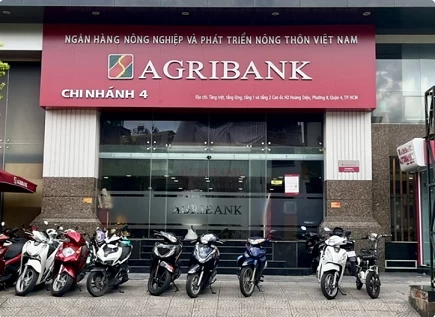
Banks issue bonds to raise long-term capital, adhere to regulations
Latest
 |
| A branch of fully state-owned Agribank in HCM City. Commercial banks are seeking to issue bonds to raise long-term capital while adhering to the capital safety regulations set by the central bank. (Source: VNA) |
Banks issued bonds totalling 27 trillion VND (1.15 billion USD) last month, or 87% of total corporate bond issuance in the market and double the amount recorded the same time last year, according to a report by local credit rating agency FiinRatings.
Banks issued bonds worth 169 trillion VND as of the end of July with major issuers including MBBank (10 trillion VND), Vietinbank (5 trillion VND), and SHB (3 trillion VND).
“Banks are consistently issuing bonds to bolster their Tier 2 capital in compliance with the regulations set forth by the central bank,” according to another credit rating agency, VIS Rating.
Projected bond issuances for the remaining months of the year include plans from Vietinbank (8 trillion VND), LPBank (6 trillion VND), ACB (15 trillion VND), SHB (5 trillion VND), and BIDV (4 trillion VND), among others.
Last month, fully state-owned Agribank announced plans to issue 10 million bonds to the public, with a total value of 10 trillion VND.
The interest rate on these bonds is set to be 2% higher than the average 12-month savings deposit interest rate offered by the four largest state-owned commercial banks (Agribank, Vietinbank, BIDV, and Vietcombank) for the first five years, and 3% higher for the remaining five years.
Based on current interest rates, this rate may exceed 6% annually in the first year.
The bond issuance aims to secure long-term capital to address the economy’s demand for loans.
These bonds may also serve as collateral for bank loans at preferential interest rates.
Stringent regulations
The central bank has mandated a reduction in the maximum ratio of short-term capital allocated for medium- and long-term lending to 30%, down from the previous limit of 34%.
It has also stipulated that loans must not exceed 85% of total mobilised capital.
The stringent regulations on credit safety limits and adequacy for medium- and long-term capital set by the central bank is pushing banks to issue bonds.
Amid slowing deposit growth attributed to low interest rates, banks are increasingly seeking alternative funding sources through the bond market.
VIS Rating has projected a requirement of 283 trillion VND of capital-raising bonds over the next three years for banks to maintain internal capital and comply with safety ratios.
The central bank has set a credit growth target of 14-15% for this year. Credit reached nearly 14.4 quadrillion VND in the first half, up 6% since the beginning of the year.
Non-performing loans within the banking system rose by 75.9 trillion VND in the first five months, according to the latest data from the central bank.
The bad debt ratio of the banking system stood at 4.94% as of the end of May, up from the 4.55% at the end of last year, according to the data.

























